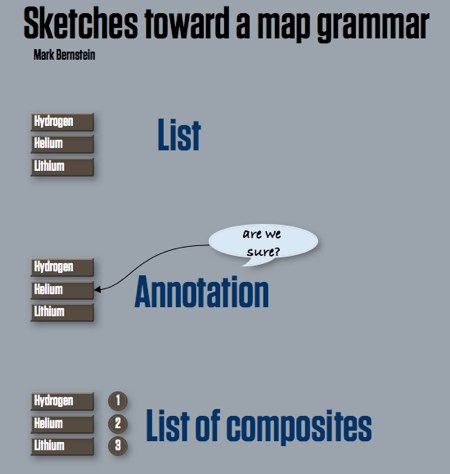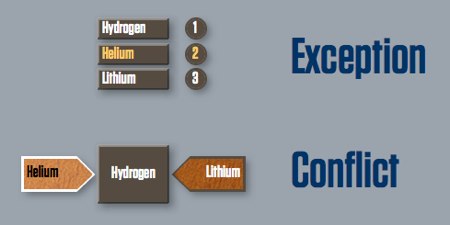Tinderbox Weekend: Toward A Map Grammar
At Tinderbox Weekend Boston, my own talk took a look at Tinderbox Maps. Much of this talk surveys some of the fascinating Tinderbox maps that people send me – especially beautiful maps that were created to get stuff done. There’s one gorgeous set of reading notes from Julie Tolmie, and Robert Brook’s observations on how Tinderbox maps let you acknowledge disagreements that you can’t resolve within a meeting. There are Tom Smith’s fascinating observations on using Tinderbox in child custody hearings, and Michael Bywater’s sketch of a developing lecture. (You can hear this part on a nice screencast on the CD).
I also talked a bit about a tentative grammar of Tinderbox maps.

I’m very reluctant to tell you how to organize your work: you know your work better than I do! The structure of a Tinderbox map should emerge from the data and should evolve as your understanding improves and as your needs change. Tinderbox gives you great tools and gets out of the way. We try to leave the Methodological Snake Oil™ to others.
Still, people do ask all the time. And when I started to sketch some simple example, I found parts of the exercise were surprisingly interesting.

This is not the only way to show an exception or a conflict. Here’s a homework problem:
Extra Credit: show three other ways to represent conflict in a map. Explain how your solution differs, and in what situations it might be better or worse.
It’s a more interesting topic, really, than I’d realized. We just finished the program committee meeting for Hypertext 2010, and something like this would surely be a terrific topic for research papers. In fact, there’s room for everyone! Want to collaborate? Write me. Want to work the topic on your own? Be my guest!